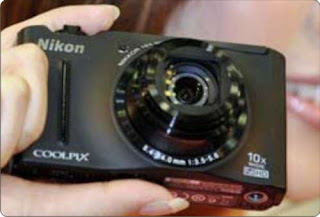This Coolpix S8100 compact megazoom is Nikon's follow-up towards Coolpix S8000. That camera didn't offer much more than what you can get from other manufacturers--if anything--and produced normal photos and had average shooting effectiveness. Its design was really the only thing that achieved it above average. Nikon quickly moved forward while using the S8100, keeping the prior model's design usually, but adding a high-speed backside-illuminated (BSI) CMOS sensor.
The advancements made in the digital compact world in the last year have really given us hope in the future of the industry, and the Nikon Coolpix S8100 is usually a premiere example of why the low light revolution need to be proud. Ever since we reviewed this Canon PowerShot SD4000 IS, we knew which the game had been changed, and it'd never remain the same. Canon has been doing wonders with basic imaging sensors that are dedicated to high ISO quality. We've also seen it from Sony because of their DSC-TX7, and Panasonic is gradually capturing up.
Now along comes Nikon's completely new Coolpix S8100, which gives the not long ago reviewed Canon PowerShot SD4500 IS anything to sweat about. Overall, both cameras received identical score from us because they surpass in core departments. And at the tip of our exclusive jaunt with both equally cameras side-by-side, it became apparent that either one is a quality choice for point-and-shoot user who seeks the most beneficial in low light. Keep in mind which the Nikon Coolpix S8100 is 50 bucks cheaper versus Canon PowerShot SD4500 IS.
The beneficial: Excellent shooting performance; great LCD; music mic; 10x zoom in an beautiful compact body.The bad: Soft pics on either side of ISO 250; white balance is a little down; no manual or semi manual shooting processes.The bottom line: With fast effectiveness, good photos, and an excellent feature-to-price relation, the Nikon Coolpix S8100 is a concise mega zoom worth considering.
It is in many respects very like the Coolpix S8000, but the S8100 incorporates a back-lit CMOS sensor with 12. 1MP in preference to the S8000's 14MP CCD sensor. Major benefit of the back-lit sensor (and this drop in pixel count) is which the images should have less noise.
Such as S8000, the S8100 has a lens with the equivalent focal length of 30-300mm, almost as wide as some might including, but a usefully long telephoto optic for the opposite end of the zoom assortment. Camera shake is an issue having long lenses and low light, even so the S8100 has both optical vibration decline and electronic vibration reduction (VR) that can help counter the problem.




0 comments:
Post a Comment